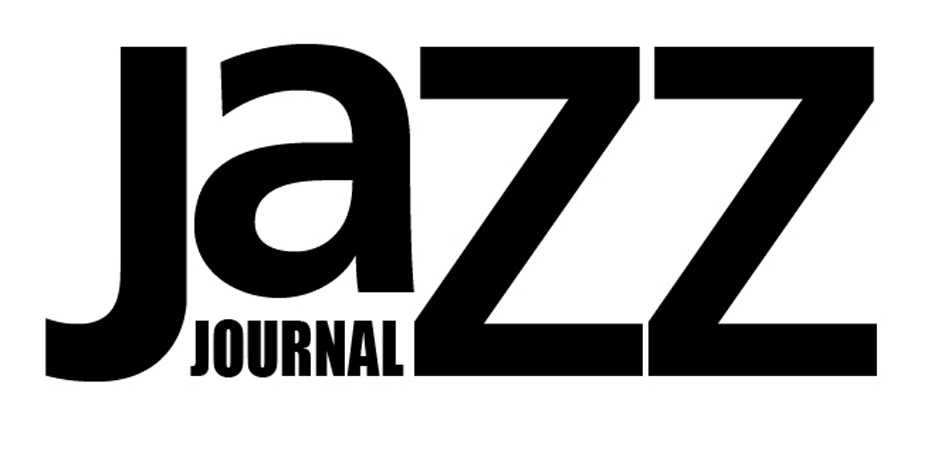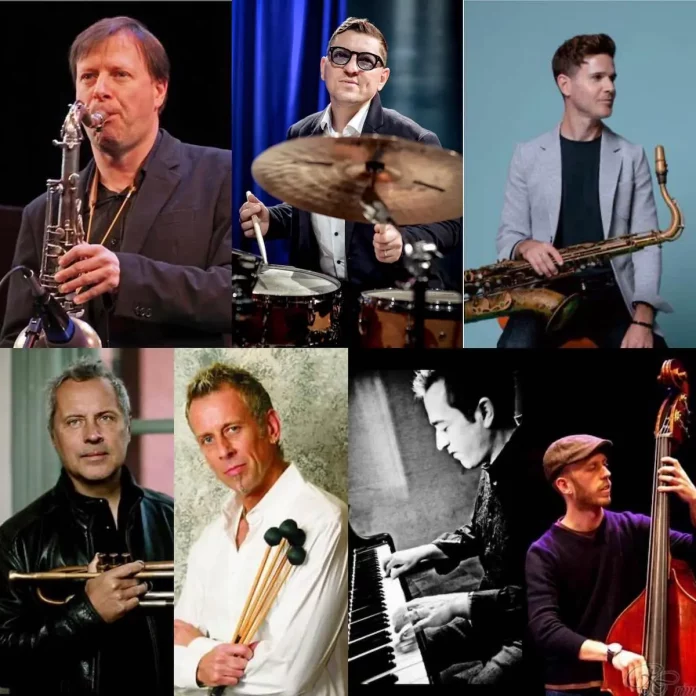Vladimir Kostadinovic: Iris (Criss Cross Jazz 1425)
Vladimir Kostadinovic is a Serbia-born, Vienna-based drummer, whose early years were spent absorbing the classical repertoire whilst performing such music on the accordion and pursuing an interest in jazz. The jazz involvement came to fruition once he started to develop his drumming skills on entering the Graz Conservatory.
By the time this album was recorded in 2024, he had become a sought-after percussionist on the European scene. Hence for this recording he found himself amongst some pretty heavyweight company – trumpeter Alex Sipiagin, vibraharpist Joe Locke and pianist Geoffrey Keezer, not to mention saxophonist Chris Potter, present on the two opening tracks.
The leader is bold, giving his fellow musicians a weighty springboard upon which to display their considerable skills. Potter certainly benefits from the percussive attack on the opening track Iris and the following The World Keeps Ending And The World Keeps Going On, the latter a collective triumph as the meter shifts from 9/4 to 5/4, the saxophonist working impressively in tandem with Sipiagin. A contrast in moods is offered on Unborn Child, a highly personal composition from the leader. That’s followed by Joe Locke’s Is There A Heart In This House, apply described in the sleeve note as a “poignant affirmative anthem”. The composer is in commanding form throughout.
Bass player Matt Brewer is a powerful presence on the ballad Echoes Of Eternity. Tenor saxophonist Ben Wendel has echoes of Michael Brecker in his impressive solo on Collectors Of Emotions, which finds Keezer taking to the Fender Rhodes, and Sonny Rollins Airegin (virtually unrecognisable in this Locke reworking) has the front-liners in full flow as Kostadinovic offers up a rhythmic backwash of varying accents.
Now over 40 years in existence, the Netherlands-based Criss Cross label continues to issue music that modern jazz purists would regard as the “real thing”.
Unity Quartet: Samba Of Sorts (Sunnyside Records SSC1755)
The quartet is made up of four Brazil-born musicians who are based in New York. They have been performing together since 2021, seeking to create a fusion of samba (or related music) and jazz. That idea harks back to the heady days of the 1960s, although a more modern approach can be heard today. The group members are Helio Alves (piano), Guilherme Monteiro (guitar), Gill Lopes (bass) and Alex Kautz (drums).
The music combines originals with tunes like Milton Nascimento’s Viola Violar and Hermeto Pascal’s Santo Antonio, all delivered in a relatively subtle manner, showing due respect to the genre. If fusion is to be successful, the elements should be present in equal measure and the group certainly manage to achieve this.
Drummer Kautz is relatively subdued throughout, perhaps reacting against the tendency for percussionists to be on top of the mix on many Latin recordings and live performances. This gives the guitar/piano axis plenty of space to display their combined and individual talents.
The ”lighter touch” approach is easy on the ear and if the quartet does not exactly set the blood racing, the overall concept is a worthy one.
Felipe Salles: Camera Obscura (Tapestry 76035-2)
Brazil-born Felipe Salles might be a new name to some, but he has been playing in the US since 1995, rubbing shoulders with the likes of Randy Brecker, Paquito D’Rivera, Dave Liebman (his mentor) and Jerry Bergonzi. For his latest release, the saxophonist has realised his long-standing dream of recording his regular group with a string quartet. For the two days of recording, he used 10 of his own compositions. On six of these he used the Cushman Quartet in combination with himself, Nando Michelin (piano), Keala Kaumeheiwa (bass) and Steve Langone (drums). He also arranged and orchestrated all the music.
Salles brings a whole armoury to the table, including alto flute, piccolo, bass flute and bass clarinet, on all of which he sounds equally at home. The strings integrate beautifully with the jazz quartet, so consequently there’s no “third stream” wasteland, which could easily have been the case. The textures the listener experiences are often quite dense, the arrangements carefully crafted to validate the amalgamation taking place.
There are no particularly outstanding tracks, as there is a consistency throughout, whether the style be Latinesque, straightahead swing or reflective. Perhaps this release could even win over some jazzers who prefer their music with “no strings attached”.

